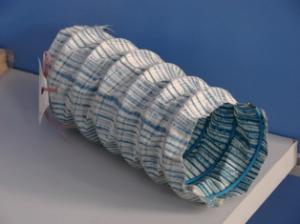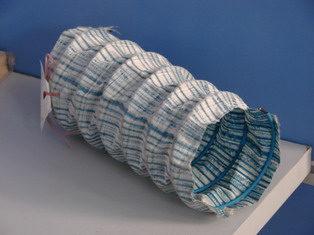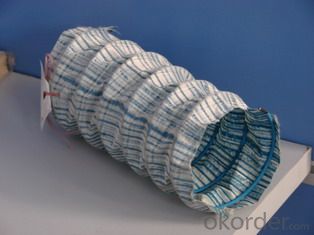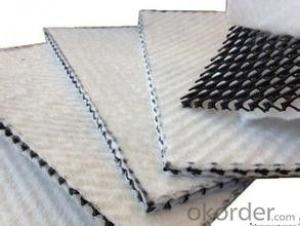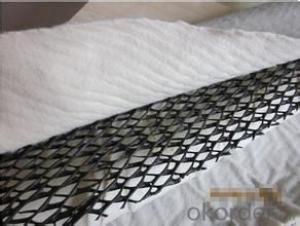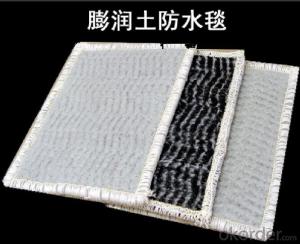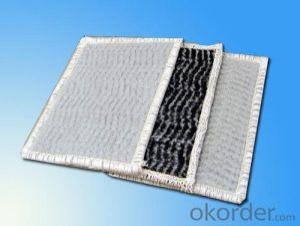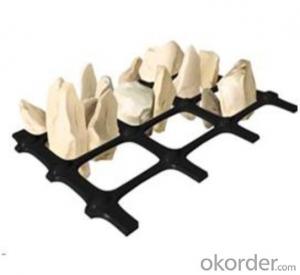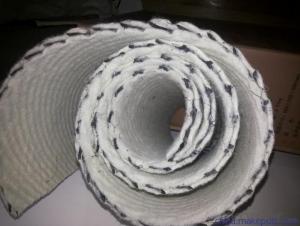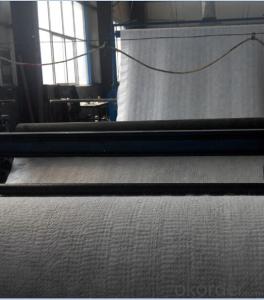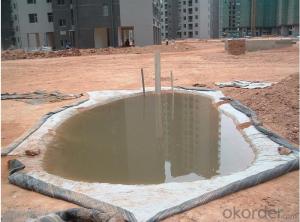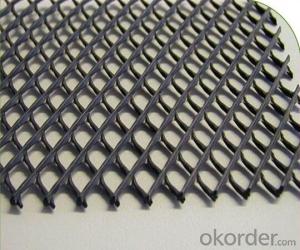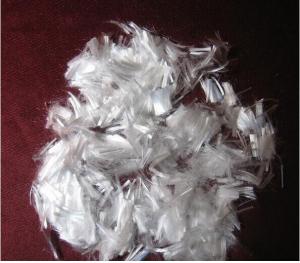Product name: Soft Water Percolation Tube
- Loading Port:
- Qingdao
- Payment Terms:
- TT OR LC
- Min Order Qty:
- 1 m
- Supply Capability:
- 10000 m/month
OKorder Service Pledge
OKorder Financial Service
You Might Also Like
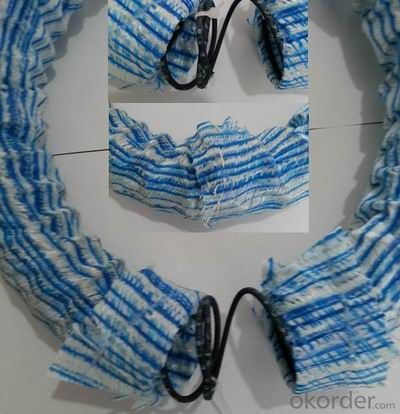
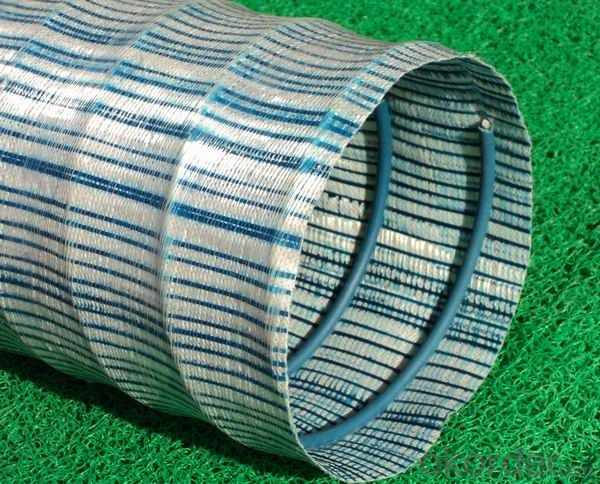
Soft water pipe
Products overview:
Shandong yongrun soft water pipe is antirust spring circle supporting tube body, high pressure formation soft structure, non-woven filter, make the sediment lined with impurities can enter into a tube, so as to achieve the effect of net ooze water, polypropylene fiber coating layer and the spring around the hoop tube body be organic one, has the very good all-round permeable function, infiltration water can smoothly into the tube, and sediment impurity is blocked in the pipe, so as to achieve the floods, filter, drainage letup purposes. Product features:
1 and pore diameter small, all-round permeable
2, tensile compression strong high and long service life
3, corrosion and erosion of antibiotics
4, whole continuity, joint, and cohesion convenient. Less
5, light weight, convenient for construction
6, texture is soft, and the soil combination
Application:
1, water, reduce emissions penetration against embellish line, soft soil layer, strengthen the soil reinforcement to prevent collapse
2, the airport, railway, highway, playground, park green space drainage
3, mining tail dam, the power plant ash dam, landfill systen
4, tunnel wall in the back, retaining wall, the subgrade pavement, slope surface drainage
- Q: How are retaining walls used in earthwork?
- Retaining walls are used in earthwork to provide structural support and prevent soil erosion. They are designed to hold back soil and prevent it from sliding or collapsing, especially in areas with steep slopes or uneven terrain. Retaining walls are commonly used in construction projects such as roadways, buildings, and landscaping to create level surfaces and ensure stability.
- Q: Are there any earthwork products specifically designed for agricultural projects?
- Yes, there are earthwork products specifically designed for agricultural projects. These products include agricultural drainage systems, erosion control blankets, retaining walls, and berms. These earthwork products are designed to enhance soil fertility, prevent erosion, and improve overall agricultural productivity.
- Q: Can earthwork products be used for constructing outdoor sculptures?
- Yes, earthwork products can be used for constructing outdoor sculptures. Earthwork products, such as soil, clay, sand, and rocks, provide a natural and versatile medium for sculpting outdoor artworks. These materials can be shaped, molded, and carved to create various forms and textures, allowing artists to express their creativity and bring unique sculptures to life in outdoor settings.
- Q: Are earthwork products resistant to color fading?
- Yes, earthwork products are generally resistant to color fading due to their natural composition and ability to withstand exposure to sunlight and other environmental factors.
- Q: Can earthwork products be used for creating outdoor meditation spaces?
- Yes, earthwork products can indeed be used for creating outdoor meditation spaces. Earthwork products such as natural stones, pebbles, boulders, and landscaping materials can be used to design and construct serene and tranquil environments that are ideal for meditation. These materials can be used to create pathways, seating areas, rock gardens, and other elements that enhance the ambiance and promote a sense of peace and tranquility in outdoor meditation spaces.
- Q: Can geotextiles be used for filtration purposes in earthwork projects?
- Yes, geotextiles can be used for filtration purposes in earthwork projects. Geotextiles are permeable fabrics that can effectively filter different types of particles and materials from passing through while allowing water to flow through them. This makes them suitable for applications such as erosion control, drainage systems, and separation of different soil layers in earthwork projects.
- Q: How do geosynthetic materials contribute to soil stabilization in agricultural applications?
- Geosynthetic materials, such as geotextiles and geogrids, play a crucial role in soil stabilization in agricultural applications. These materials are designed to enhance the strength and stability of the soil, reducing erosion and preventing soil movement. By reinforcing the soil, geosynthetics help retain moisture, improve drainage, and increase the load-bearing capacity of the ground. They also act as a barrier, preventing weed growth and protecting the soil from external forces. Overall, geosynthetic materials provide an effective and sustainable solution for maintaining soil stability in agricultural settings.
- Q: What is the function of geosynthetic drainage materials in sports field drainage?
- The function of geosynthetic drainage materials in sports field drainage is to provide effective removal of excess water from the field, preventing water logging and maintaining optimal playing conditions. These materials allow for efficient water flow and distribution, reducing the risk of surface runoff and ensuring proper field drainage, which helps in preventing damage to the turf and maintaining the longevity of the sports field.
- Q: How do earthwork products help with noise reduction?
- Earthwork products, such as soil, gravel, and rocks, can help with noise reduction by acting as natural barriers that absorb and deflect sound waves. When used in the construction of berms, embankments, or retaining walls, these materials effectively block and reduce noise, creating a quieter environment. The density and thickness of the earthwork products play a crucial role in attenuating noise, as they absorb and dissipate sound energy, preventing it from traveling further. Additionally, these products can also help by acting as visual screens, further reducing noise by obstructing direct lines of sight to the noise source.
- Q: What are the different methods of installing earthwork products?
- Some of the different methods of installing earthwork products include excavation and grading, compacting the soil, using geotextiles or geogrids for reinforcement, and installing drainage systems. These methods may vary depending on the specific earthwork product being installed and the desired outcome.
Send your message to us
Product name: Soft Water Percolation Tube
- Loading Port:
- Qingdao
- Payment Terms:
- TT OR LC
- Min Order Qty:
- 1 m
- Supply Capability:
- 10000 m/month
OKorder Service Pledge
OKorder Financial Service
Similar products
Hot products
Hot Searches
Related keywords
